Most people only think about vitamin C when cold or flu season hits — and they’ve been told the same story for decades: “take a little, but not too much, and never over 2,000 mg a day.”
Here’s the thing — that’s a myth.
Vitamin C is so much more than a seasonal supplement. It’s a life-supporting nutrient your body depends on for repair, recovery, and resilience. The science keeps catching up to what holistic practitioners have known for years: Vitamin C isn’t optional; it’s foundational.
Without enough of it, your body literally starts to fall apart. (Scurvy isn’t just pirate lore — it’s what happens when collagen production shuts down.) Collagen is what keeps your gums firm, your teeth anchored, and your tissues strong. And when infection strikes — in the mouth or anywhere else — vitamin C becomes your best line of defense against it spreading through your system.
The key isn’t just taking vitamin C — it’s taking enough for your body to actually handle the problem.
That’s where my Vitamin C Crisis Protocol comes in: the method I use when infection strikes and I need real results, not wishful thinking.
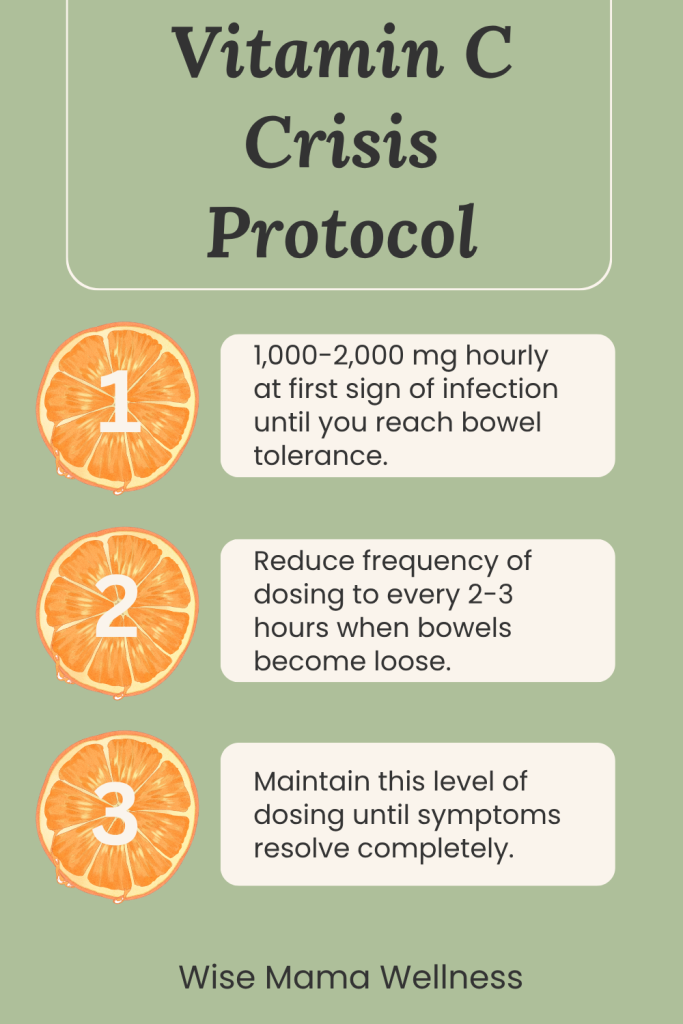
What the Vitamin C Crisis Protocol Actually Is
It’s beautifully simple. You flood the body with vitamin C at the first sign of infection so your immune system has everything it needs to go to work.
How it works:
- Take 1,000–2,000 mg of vitamin C every hour until you hit bowel tolerance (loose stools = you’ve met your limit).
- Then back off to every 2–3 hours.
- Keep going until symptoms fully resolve.
This isn’t “overdosing.” It’s matching your body’s demand in a crisis. When infection is present, the body burns through vitamin C at a rapid rate. You’re just replenishing what’s being used.
Wise Mama Tip: Keep DIY Liposomal Vitamin C on hand — it’s gentle on digestion and absorbs up to 90% better than powdered forms.
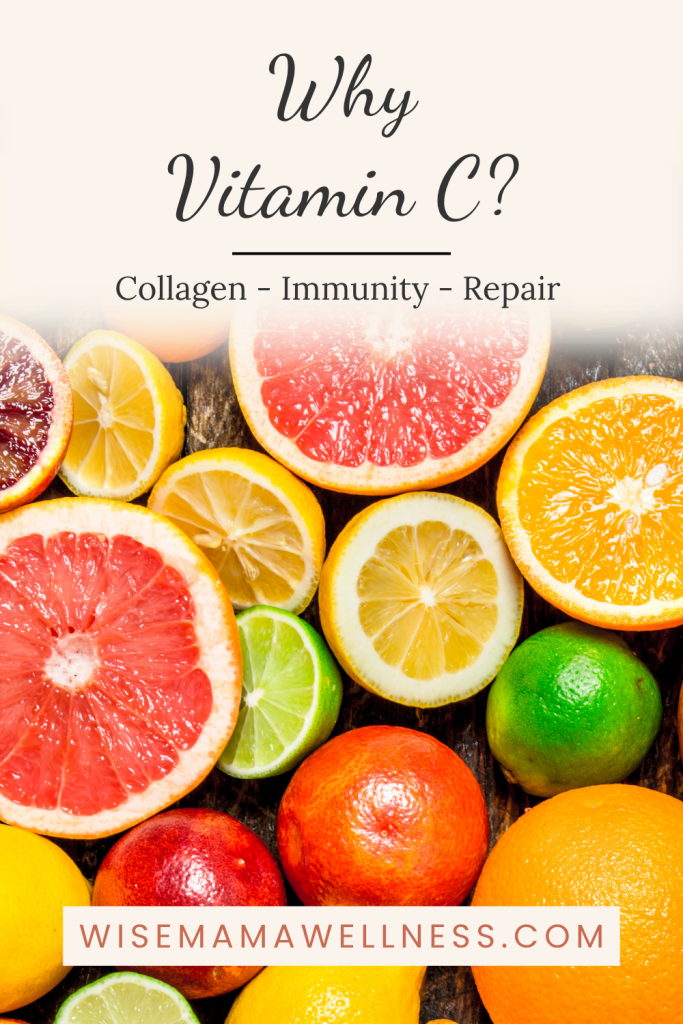
Why Vitamin C Helps When Your Mouth Is on Fire
Tooth infections don’t exist in isolation — they’re symptoms of deeper inflammation in your system.
Vitamin C steps in as the cleanup crew and the construction team all at once:
- Boosts white blood cell counts→ the body’s infection fighters
- Builds collagen → promoting gums and tissue to actually rebuild
- Tames inflammation → pain and swelling go down fast
When infection flares, your need for vitamin C skyrockets. The Crisis Protocol just answers that call.
(For more on how teeth actually heal themselves, check out Can Teeth Really Heal? What Science Says About Remineralization)
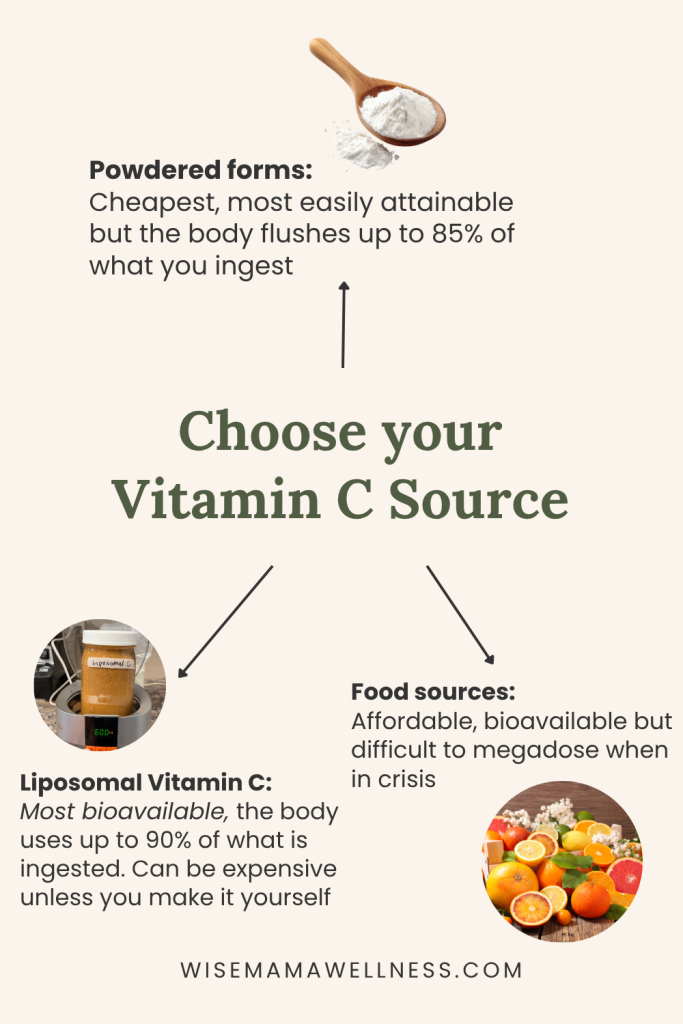
Choosing Your C: What Actually Works
- Sodium Ascorbate or Ascorbic Acid powder or pills → reliable, affordable, widely available. Absorption is lower (around 15–20%), so more is needed.
- Liposomal Vitamin C → high absorption (up to 90%), gentle on digestion, and ideal during acute infection.
- Whole-Food Sources → slower but perfect for maintenance once the crisis passes.
Let’s Clear Up the Ascorbic Acid Confusion (Because Google Gets This Wrong)
There’s a LOT of misinformation online claiming that “ascorbic acid isn’t real vitamin C” or that you must use fancy mineral-bound forms to get results.
The simple truth is this:
Vitamin C is the ascorbate molecule.
That’s it. Nothing more, nothing less.
Ascorbic acid = vitamin C
Sodium ascorbate = vitamin C
Calcium ascorbate = vitamin C
Magnesium ascorbate = vitamin C
But — and this is the part most people don’t know:
The active agent in all forms of vitamin C is the ascorbate anion.
Not the sodium.
Not the calcium.
Not the magnesium.
Just the ascorbate.
This means:
- Ascorbic acid is NOT inferior.
- Sodium ascorbate is NOT superior — it’s simply buffered.
- Calcium ascorbate is fine for daily use… BUT should not be used for making liposomal vitamin C. (The calcium interferes with proper encapsulation and reduces absorption.)
Over 80 years of clinical research — Klenner, Cathcart, Levy, and others — used ascorbic acid or sodium ascorbate almost exclusively to reverse infections, viral syndromes, toxic exposures, and severe inflammatory conditions.
If it works in a hospital…
If it works in an IV…
If it works in the research…
It works in your kitchen, too.
Dr. Thomas Levy’s site summarizes this clearly
So if all you have is a big bag of plain ascorbic acid?
You’re already holding one of the most powerful healing tools in the world.
When to Wave the White Flag
The Crisis Protocol can be introduced too late to avoid emergency care.
Get professional help if you see:
- Swelling spreading to the cheek, face, or neck
- Fever or chills
- Trouble swallowing or breathing
That said — if you’re using vitamin C at the right dosage, you’re far less likely to ever reach this point. And if you do, go get help while continuing high-dose vitamin C. It will only support your recovery.
From One Mom to Another
Tooth infections never show up when life is calm. They pick recital week, work deadlines, or your husband’s business trip.
Having vitamin C ready means you can act instead of panic.
You’ll still need to deal with the root cause, but the Crisis Protocol buys you the crucial first hours — pain down, swelling reduced, brain clear enough to plan your next step.
Bottom Line
Vitamin C is one of the simplest tools in your natural-mama cabinet — inexpensive, safe, and shockingly powerful when used correctly. It’s peace of mind in powder form.
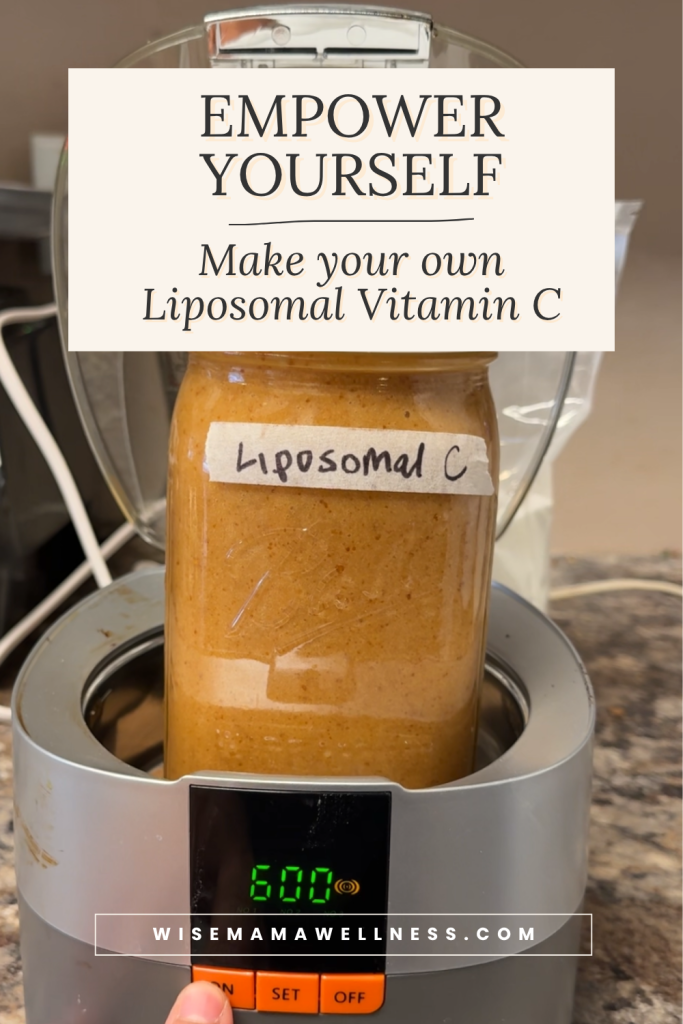
Empower Yourself
Want to keep liposomal vitamin C on hand without paying $45 a bottle? Grab my free DIY Liposomal Vitamin C Recipe — the exact recipe I use to keep our home stocked and ready.
Get it today and start building your own family wellness cabinet.

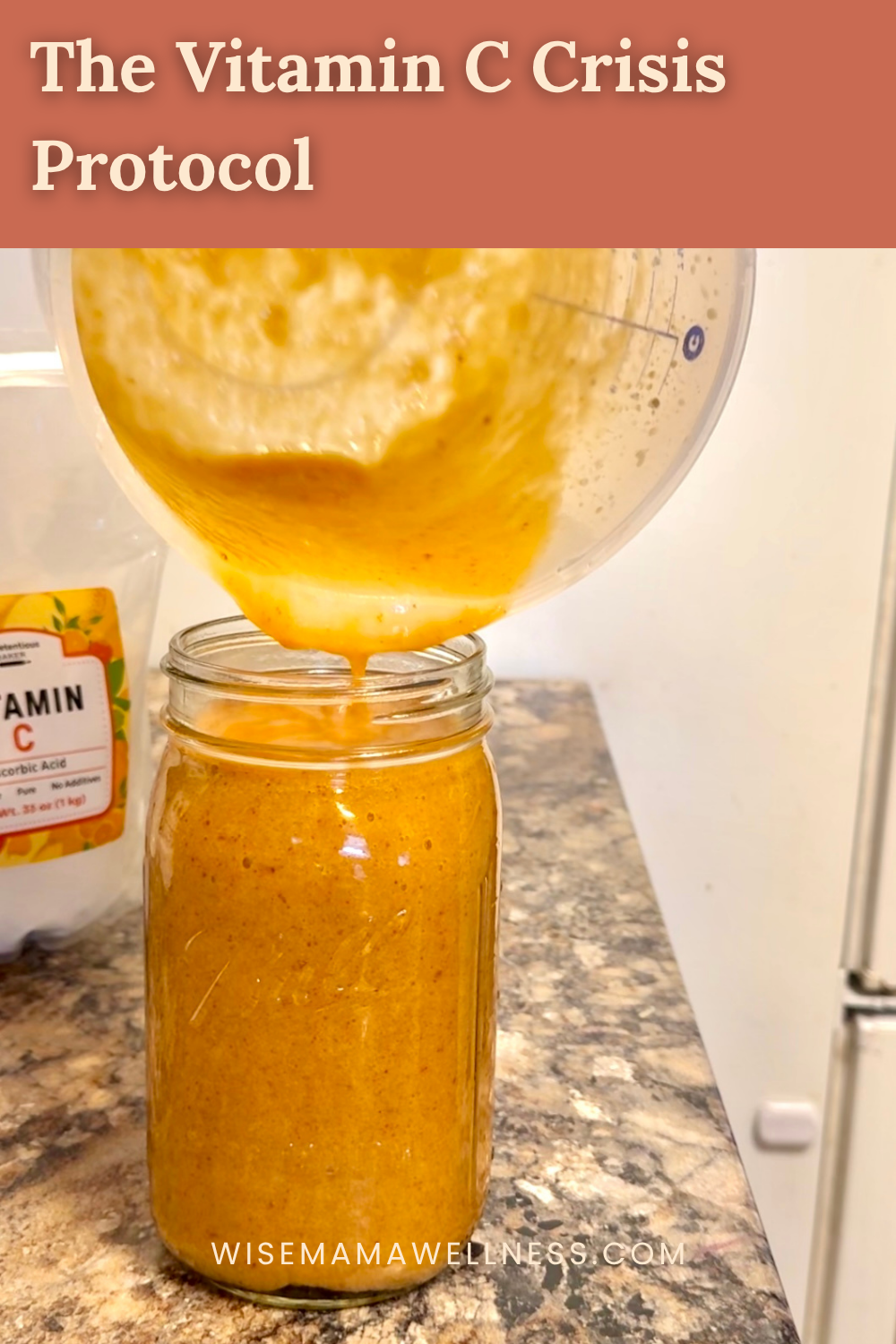
Leave a Reply